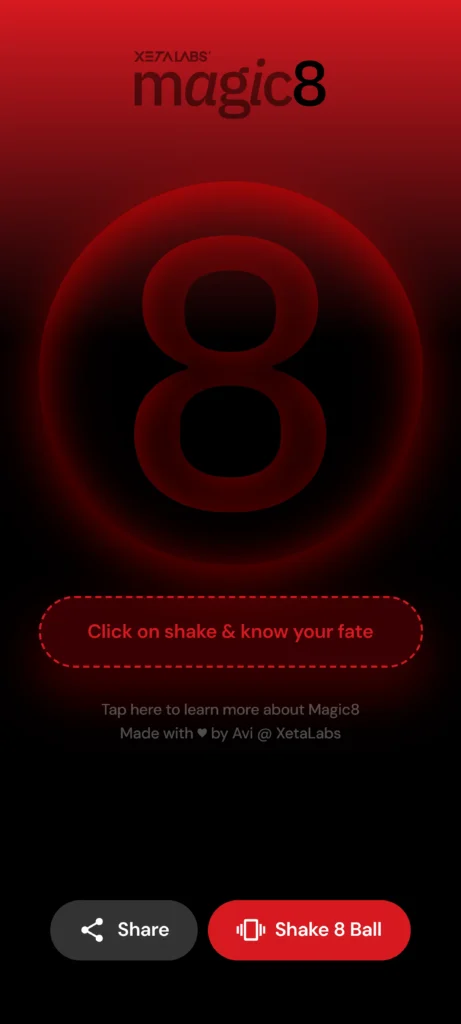The Magic 8 Ball is one of the most recognizable toys in American history. First sold in the 1950s and later distributed widely by Mattel, it was marketed as a fortune-telling device, but really, it was a novelty. Inside the black plastic sphere was a murky liquid and a 20-sided die, each face printed with a short answer. You’d ask a yes-or-no question, shake the ball, and wait as a blue message floated into view. Answers ranged from confident to vague to downright discouraging: “It is certain,” “Ask again later,” “Outlook not so good.” It didn’t matter if the answer was right, the experience was the point.
It became a staple of toy aisles, desks, and dorm rooms. It was something kids passed around at sleepovers and something adults kept on their shelves for fun. It was inexpensive, easy to use, and weirdly satisfying. What made it memorable wasn’t the functionality, but the ritual, the physicality of shaking, the suspense of the liquid settling, and the way that short little phrase felt like a message from something just outside your control. It made indecision into a game, and it turned the smallest question into a moment.
I’ve always liked ideas like that, simple tools that add a layer of theater to everyday choices. So I decided to build a version of the Magic 8 Ball for the browser. I called it magic8, and it’s exactly what it sounds like: ask a question, press shake, get a response. There are only two buttons, no onboarding, and no distractions. The design is clean and self-contained, with just enough animation to echo the feel of the original toy. But underneath, there’s something different.

Every time someone visits magic8, they’re automatically assigned a query parameter in the URL, a short, four-character code that sets a “bias level” between 1 and 5. This number isn’t shown on the page, and it’s not explained to the user. But it matters. It changes the likelihood of what kind of answer they’ll get. A bias level of 1 is balanced, just like the original toy. A level 5 is heavily weighted toward positive answers. Levels in between shift the balance gradually. And this is all invisible unless you know what to look for.
This system opens up a quiet little feature: you can send links with pre-set bias levels to your friends. Click on Share to choose different levels and copy ready-to-go links. These versions all look the same, but each has its own underlying tone. Someone could send you a link where magic8 always seems optimistic, hopeful, affirming. Or one that’s slightly more cold and ambiguous. It’s subtle, but not random.
Behind the scenes, magic8 uses a system of weighted probabilities that define how often positive, neutral, or negative answers appear at each level. It applies small random variations to keep the results from feeling too scripted, but the bias is still real. The result is a toy that behaves just like the one people remember, unless you compare notes.
I didn’t want to overload the interface with settings or choices. Part of what made the original toy work was how little it asked of you. You just picked it up and played. That’s the same principle behind this version. It’s browser-based, zero login, no memory, no storage. Each session is standalone. But the twist is still there, if you’re paying attention.
Unlike many sites that pressure you to “Type” something into the Magic8 Ball to then “shake” it, are simply trying to make it more “realistic” which at is core, simply isn’t realistic. The original didn’t prompt you with a textbox modal before you shook it, right? So why should one do it when its online?
This is one of several small builds made by XetaLabs, a kind of ongoing collection of side projects that are minimal, functional, and just a bit unusual. The goal is always the same: make something that feels familiar, but adds something you didn’t expect. magic8 is a tribute to the old toy, but it’s also something new, something a little sneakier.



